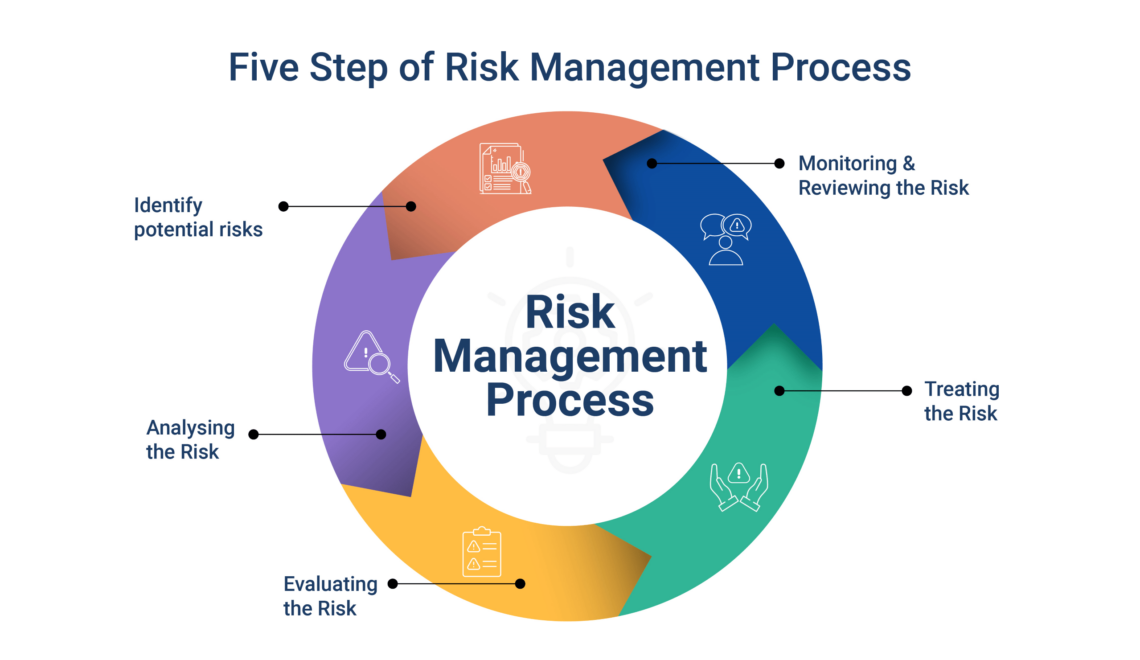
Introduction
Risk management is the process of identifying, assessing, and controlling risks. It is a systematic approach to managing uncertainty and minimizing the negative impact of potential events. Risk management is essential for any organization, regardless of size or industry.
The Risk Management Process
The risk management process typically involves the following steps:
- Identifying risks. The first step is to identify the potential risks that the organization faces. This can be done by brainstorming, reviewing historical data, and conducting risk assessments.
- Assessing risks. Once the risks have been identified, they need to be assessed. This involves determining the likelihood and impact of each risk.
- Prioritizing risks. The risks need to be prioritized so that the most significant risks can be addressed first.
- Developing risk responses. Once the risks have been prioritized, risk responses need to be developed. This involves identifying ways to reduce the likelihood or impact of each risk.
- Implementing risk responses. The risk responses need to be implemented and monitored to ensure that they are effective.
- Communicating risk management. The risk management process needs to be communicated to all stakeholders so that they are aware of the risks and the organization’s approach to managing them.
Types of Risks
There are many different types of risks that can impact an organization. Some of the most common types of risks include:
- Financial risks. These risks can include changes in interest rates, currency fluctuations, and commodity prices.
- Operational risks. These risks can include equipment failure, employee errors, and natural disasters.
- Strategic risks. These risks can include changes in the competitive landscape, new regulations, and customer behavior.
- Compliance risks. These risks can include failure to comply with laws and regulations.
- Reputational risks. These risks can include damage to the organization’s reputation due to product recalls, data breaches, or other negative events.
Risk Management Tools and Techniques
There are a number of tools and techniques that can be used to support the risk management process. Some of the most common tools and techniques include:
- Risk registers. Risk registers are used to document the risks that an organization faces.
- Risk assessments. Risk assessments are used to assess the likelihood and impact of risks.
- Risk mitigation strategies. Risk mitigation strategies are used to reduce the likelihood or impact of risks.
- Risk monitoring and reporting. Risk monitoring and reporting are used to track the effectiveness of the risk management process.
The Importance of Risk Management
Risk management is important for a number of reasons. First, it can help to protect the organization from financial losses. Second, it can help to protect the organization’s reputation. Third, it can help to improve the organization’s decision-making process. Fourth, it can help to identify and address potential problems before they occur.
Conclusion
Risk management is an essential part of any organization’s success. By following the risk management process and using the right tools and techniques, organizations can reduce the likelihood and impact of risks and improve their overall performance.
In addition to the above, here are some other important points about risk management:
- Risk management is an ongoing process. It is not something that can be done once and then forgotten about.
- Risk management should be integrated into all aspects of the organization’s operations.
- Risk management should be a collaborative effort. It should involve all levels of the organization, from top management to front-line employees.
- Risk management should be flexible. The risk management process should be able to adapt to changes in the organization’s environment.
By following these principles, organizations can improve their ability to manage risk and achieve their goals.
